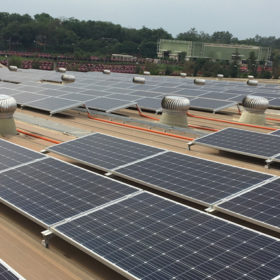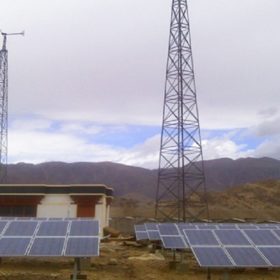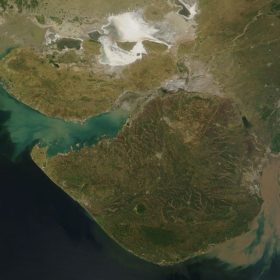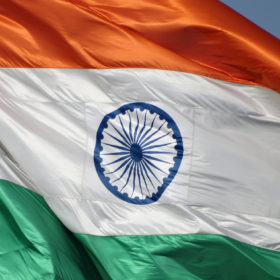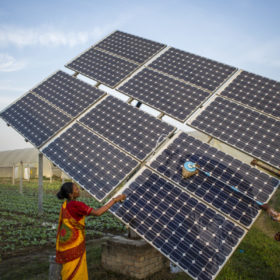Analyst expects recovery for PV and storage supply chains
U.S.-owned analyst Wood Mackenzie expects solar demand to decline but predicts the market will recover, with the prospects for the energy transition remaining intact.
Mahindra Susten to install Bangladesh’s largest solar rooftop
The renewables business of the conglomerate will undertake its first project across the border by providing engineering, procurement and construction services on a Rs12.6 crore, 3.1 MW array for a German-Bangladeshi knitwear company which will buy the power generated for Rs5.71518/kWh.
Distributed solar lender cKers Finance raises $5 million from US investor New Energy Nexus
The New Delhi based lender—which has funded over 45 MW of distributed solar energy assets—will use the new investment to catalyze the growth of residential and commercial solar systems, solar pumps, floating solar and solar cold chains in India.
Gujarat approves Rs 13.61 crore solar projects for water treatment plants
These solar plants—installed for eleven nagarpalikas (municipalities) in the State—would generate approximately 2,835 KW power, saving Rs 2.94 crore in the electricity bills.
Project developers in south Asia can secure cash from IRENA funding pot
The Climate Investment Platform launched by three multilateral bodies in September is now open for business and renewables companies in developing nations across 14 regions including south Asia could qualify for help with clean energy facilities, renewables-related grid improvements and energy efficiency schemes.
Optimistic solar outlook dimmed by COVID-19 – Bridge To India
Developers are also expected to drag their heels over project completion during the first half of the year as the safeguarding duty applied to imported Chinese and Malaysian solar products is due to expire at the end of July.
Solar will turn vicious water-energy-climate cycle into virtuous loop
The International Water Management Institute is promoting the Solar Irrigation for Agricultural Resilience (SoLAR) initiative to expand the use of solar irrigation systems throughout Bangladesh, India, Nepal, and Pakistan. Proponents of solar irrigation pumps say that they can have a strong positive impact on groundwater.
Investment opportunities in India’s solar sector
India, with 750 GW of solar potential, has also one of the highest transmission and distribution losses in the world. So, while there is immense scope in PV deployment, there is a need for greater investment in grid related projects also to help the country best utilise its renewable energy potential, says the latest report by SolarPower Europe and National Solar Energy Federation of India (NSEFI) which also makes recommendations to help accelerate investments in the solar sector.
Uttar Pradesh will become the hub of solar energy, says State’s energy minister
15 GW of utility scale and 8.5 GW grid-connected rooftop solar by year 2030 is the new target set for the state which is currently chasing year 2022 target of 6.4 GW and 4.3 GW, respectively.
Gujarat to provide Rs 912 crore subsidy for rooftop solar this fiscal
The state budget for 2020-21 has also allocated Rs 125 crore under Pradhan Mantri KUSUM Yojana to solarize 18,500 grid-connected pumps and for standalone offgrid solar power agriculture pumps.

